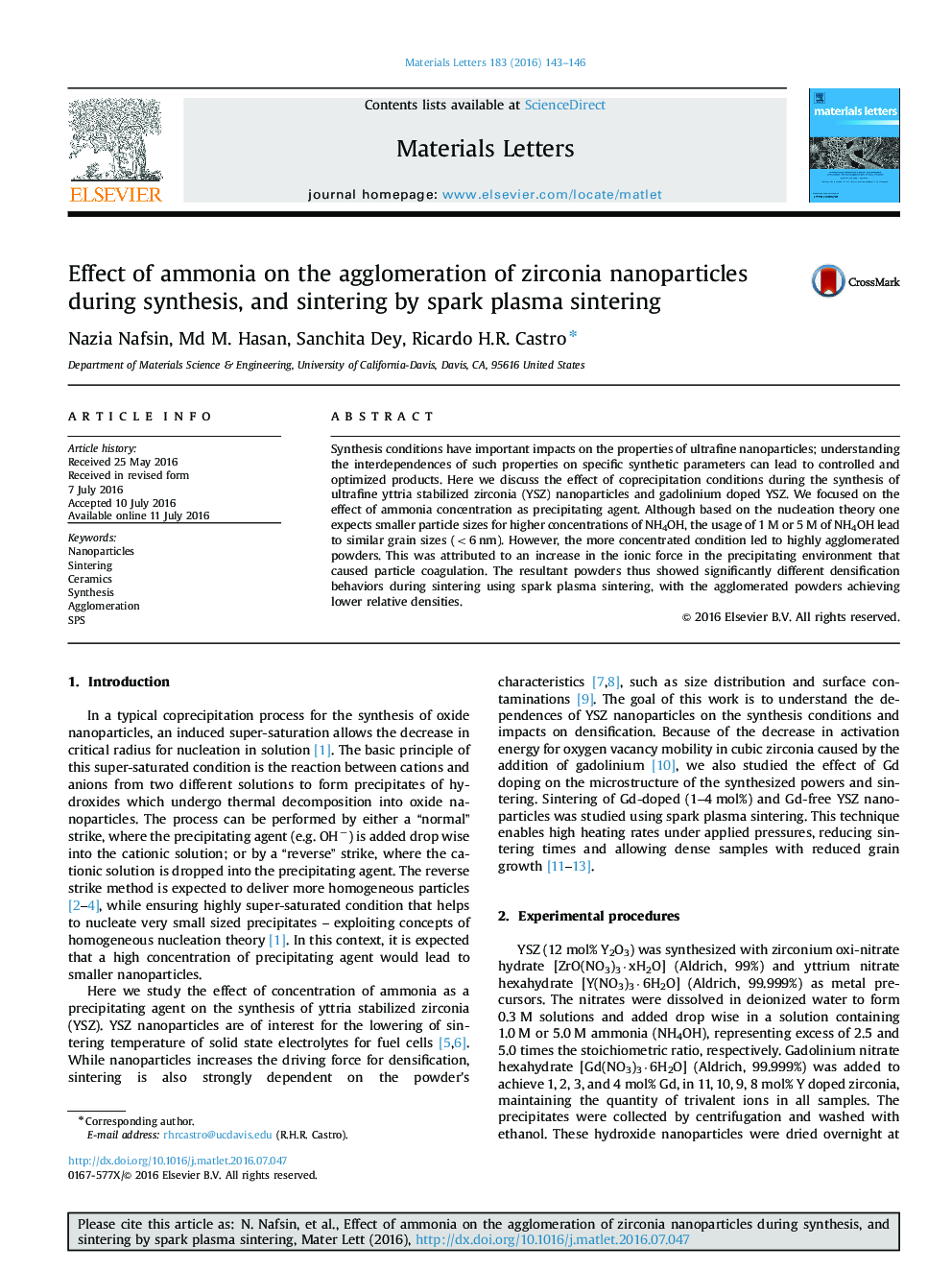| کد مقاله | کد نشریه | سال انتشار | مقاله انگلیسی | نسخه تمام متن |
|---|---|---|---|---|
| 1641067 | 1517205 | 2016 | 4 صفحه PDF | دانلود رایگان |
• Coprecipitation method leads to zirconia nanoparticles with grain sizes below 10 nm.
• The precipitating agent (ammonia) concentration severely affects the agglomeration state.
• Agglomeration impacts sintering using spark plasma sintering similarly to conventional sintering.
Synthesis conditions have important impacts on the properties of ultrafine nanoparticles; understanding the interdependences of such properties on specific synthetic parameters can lead to controlled and optimized products. Here we discuss the effect of coprecipitation conditions during the synthesis of ultrafine yttria stabilized zirconia (YSZ) nanoparticles and gadolinium doped YSZ. We focused on the effect of ammonia concentration as precipitating agent. Although based on the nucleation theory one expects smaller particle sizes for higher concentrations of NH4OH, the usage of 1 M or 5 M of NH4OH lead to similar grain sizes (<6 nm). However, the more concentrated condition led to highly agglomerated powders. This was attributed to an increase in the ionic force in the precipitating environment that caused particle coagulation. The resultant powders thus showed significantly different densification behaviors during sintering using spark plasma sintering, with the agglomerated powders achieving lower relative densities.
Journal: Materials Letters - Volume 183, 15 November 2016, Pages 143–146
